Have you ever gotten to the gym, warmed up, approached your equipment, and paused to think, “Am I doing the right number of sets and reps?” If you’re nodding your head, this article is for you.
On the surface, the number of sets and reps you should be doing seems straightforward. However, it will actually vary widely based on your goals! (Hence why we wrote an entire article about it.)
Ready to take the guesswork out of your workout? Keep reading!

Why Does It Even Matter?
Setting the right sets and reps for your goal is important because you’re likely wasting time in the gym if you don’t.
For example, say your goal is to lose weight. You know muscle uses more calories to maintain than fat, so you decide to try and add lean muscle to your body. You’re lifting super heavy for short sets and rep ranges, thinking that’s the best way to lean out.
The reality? Lifting heavy for short sets and reps is actually the best way to enter muscular hypertrophy or getting physically bigger muscles. Yes, you’re adding muscle to your body, but the scale won’t actually change the way you want because muscle is more dense than fat. So if your priority is weight, you need to lift the right way to get there.
(More on optimal set/rep ranges for different goals below.)
Another example: everyone’s body is different. That means you need to stop listening to your gym rat friend Dave who insists he has the end-all-be-all way to train. He has the end-all-be-all way to train for him, his goals, and his nutrition. Unfortunately, your body is unlikely to react the exact same way to his training program.
Yet another example: if you don’t know any better, you could be doing 8 sets of 15 reps of each exercise. That makes for a long workout. And we’re all about efficiency in the gym (or at home, if that’s your jam).
TL;DR: Doing the right sets/reps gets you to your goals more efficiently.
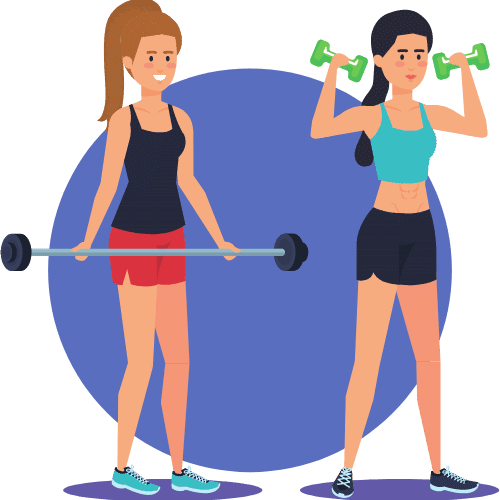
Types Of Sets
So, a “set” is a consecutive number of repetitions of an exercise that you do without stopping.
(A repetition or “rep” is one complete motion of an exercise. But, more on reps below.)
For example, if you do even two push-ups in a row, that can be a set.
No two types of sets are created equal. They all have their advantages and disadvantages.
Straight Sets
Straight sets are straightforward (couldn’t resist, I’m not sorry). In straight sets, you do your chosen number of reps followed by a rest period. Then you do your next set (or sets) of that same exercise, also with rest periods in-between. Finally, once you’ve completed all your sets of that exercise, you move onto the next one.
Example: do 5 sets of 5 reps of a bench press. Complete all 5 sets of those 5 reps before moving on to your squats.
Straight sets are the most common, especially for beginners.
Drop Sets
This type of set is more advanced and usually used when training for hypertrophy. First, you perform as many reps of an exercise at your starting weight as you can until you reach fatigue. Then you quickly drop to a lighter weight and lift that again until fatigue. Repeat this usually for 3–4 sets.
Typically, you do drop sets on machines or with dumbbells, so you can change the weight quickly.
Example: do 10 bench presses holding a 30-pound weight in each hand. Once you can’t lift that anymore, drop down to 22 or 20 and lift until you can’t. Keep rest periods minimal. Drop a third time to 15. If you can, drop a fourth time down to 7. Then move on to your next exercise or, more commonly, use these to end your workout.
Pyramid Sets
Pyramid sets are slightly more complicated but are excellent at building both strength and muscle mass. You change both the number of reps and the amount of weight you’re lifting with these sets.
You typically start with a lighter weight for more reps. Then, with each subsequent set, you decrease the number of reps and increase the weight.
Example: do 15 reps of a bench press with 10 pounds in each hand. Next set, do 10 reps with 20 pounds in each hand. Third set, do 5 reps with 30 pounds in each hand.
Pyramid sets are great for building up to a target weight. Think of the initial first few sets as a built-in warm-up for your exercise.
Supersets
This type of set is great for a high-intensity, short-duration workout. They also sometimes give you a bit of a cardio boost, which is excellent for maximizing fat loss.
To perform a superset, you do one set of one exercise back-to-back with one set of a different exercise. Rest minimally in-between (like, the few seconds it takes you to walk from one machine or barbell to the other). Then you go back to your first exercise back-to-back with your second and repeat for however many sets of the two exercises you’re doing. Again, rest about a minute in-between supersets. Only then do you move on to new exercises.
Example: do 1 set of 5 reps of bench presses followed immediately by 1 set of 5 reps of rows. Rest 1 minute. Do your next set of 5 reps of bench presses followed by your next set of 5 reps of rows. Repeat for the desired number of sets before moving on to your pull-up and squat superset.
Usually, supersets involve opposing muscle pairings (chest and back) or multi-joint/single-joint pairings (chest and triceps).
Compound Sets
Compound sets are pretty much exactly the same as supersets, with one important distinction: you work the same muscle group, not opposing ones.
Why? The idea is to boost what’s called “time under tension” (more on that below). That means the amount of time your muscle is contracted. This type of training is excellent for building muscle definition (how visibly toned you look) but not as great for building strength.
Example: do 1 set of 5 reps of a bench press followed by 1 set of 5 reps of a chest fly. Return to your bench press and follow the superset pattern.
Use compound sets if you want defined muscles.
Rest-Pause Set
If you’ve never heard of rest-pause sets, get ready for a treat. This type of set is excellent for increasing intensity and fast-tracking results.
In general, a rest-pause set breaks one typical, near-maximum set down to a handful of “minisets.” The rest period between each miniset is short—think 15–30 seconds max. You do each miniset until muscle failure (unable to complete another rep with good form).
Example: do 1 set of 8 reps of a bench press to failure. Rest for 15 seconds. Do your second set of 4 reps to failure. Rest 15 seconds. Do a third set of 1 rep to failure. Rest 15 seconds. Do a final set of 1 rep to failure.
Start with 80–90% of what you think you can lift for only a single rep. The purpose is to lift heavy to fully exhaust one particular muscle, so it builds back stronger.
Time Under Tension (TUT)
You can apply time under tension to your entire way of training. But, again, the purpose is to increase the amount of time your muscles are under strain.
There are a few things to keep in mind with this type of training:
- Don’t spend too much time in the “lockout” position. For example, when doing a bench press, don’t linger at the top.
- Maintain a steady tempo of lifting for 2 seconds, lowering for 4 seconds, and pausing between reps, not at all.
- Watch your form to ensure it stays solid.
- If you get to the end of your reps and you can’t finish them, go down in weight and complete your reps.
You can do any set/rep range you like with this type of training. Again, the focus is on drawing out the eccentric movement or the lowering of the weight.
Tri-Set/Giant Set
A tri-set (or quad-set) is also known as a giant set. They’re exactly like supersets, but with more exercises. Doing this type of set makes for a very high-intensity, high-volume workout. If you’re going for hypertrophy or bodybuilding, these sets are for you.
Example: do 1 set of 5 reps of bench presses. With minimal rest, then do 1 set of 5 reps of rows. Again with minimal rest, do 1 set of 5 reps of overhead presses. Rest for 1 minute, then go back to your bench presses and start again.
TL;DR: There are many different types of sets. Experiment to see which ones you like best.

What Are Reps?
If you’ve made it this far in, you’ve likely already figured out what reps are. But to sum it up, “reps” is short for “repetitions.” It’s the number of times you do a certain move within your set.

What About Rest?
I’m so glad you asked. How much you rest between your sets and reps will—once again—vary based on your goals.
Rest Between Sets
Very little scientific research has been done on how much you should rest between sets. Most of the focus stays on volume (the total amount of weight lifted during your workout). Let’s face it, it’s way sexier to study how heavy you can lift than how long you should be sitting on your butt between sets.
That said, there are a few things that are fairly well known about your goal and how much you should rest:
- Training for muscular power and strength: rest 2–5 minutes
- Training for hypertrophy: rest 30–90 seconds
- Training for muscular endurance: rest 30 seconds
The shorter your rest period, the more your heart rate will stay elevated as well. So if your goal is weight or fat loss, stick to the lower ends of the rest period spectrum.
Rest Between Reps
You basically never rest between reps. The entire point of doing reps is to lift through them to complete your set. So, unless you’re following some super unique workout program I’ve never heard of, don’t rest between your reps.
TL;DR: Rest between your sets will vary based on your goal. Don’t rest between reps.
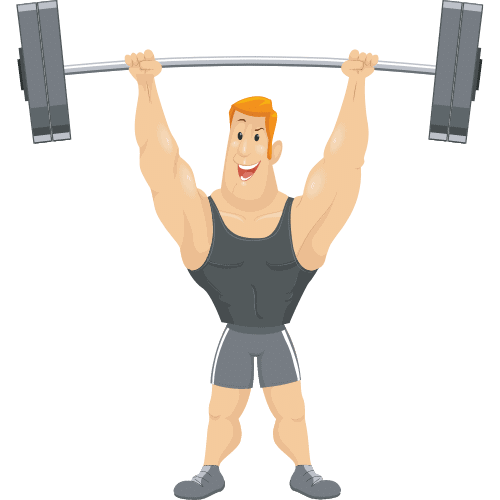
How Much Should I Lift?
So, you’re digging into exactly how many sets and reps you should be doing. But how much should you be lifting during them?
Once again, it depends. (Noticing a pattern? Everything in the world of fitness is variable.)
For a super deep dive into answering this question, check out our article here.
Want a condensed version? Here you go:
- Start with your bodyweight until your form is rock solid. (Yes, really.)
- Once your form is perfect, every single time you do your exercises, add light weights. VERY light weights.
- Add weight once you’re completing your sets and reps with ease and feel like you had 2 or 3 more “in the tank” (you could do 2 or 3 more reps at the end of each set with good form.)
This will take a little trial and error on your part. So be patient, young padawan: lift it, your gains will come.
TL;DR: Start with bodyweight and build up slowly. You can always add more weight, but you can’t take back an injury.

How Fast Should I Perform An Exercise?
To understand how fast you should be lifting during an exercise, you need to know the phases of your lift. We touched on them a bit already, but here’s a refresher:
- Eccentric: the lowering portion of the lift (lowering the weight toward you in a bench press or toward the ground in a bicep curl)
- Isometric: the brief transition between eccentric and concentric (the minuscule pause before you start the next phase of the rep)
- Concentric: the lifting portion of the lift (pressing the weight back up in a bench press or lifting it toward your shoulder in a bicep curl)
In most strength training programs, you’ll follow a 3:1:1 tempo. That’s 3 seconds eccentric, 1 second isometric, and 1 second concentric.
Here’s how fast to lift for different training goals using the tempo format above:
- Hypertrophy: 2–4:1:1–2
- Endurance: 2–6:1:1–2
- Strength: 1–2:1:1–2
TL;DR: How fast you perform exercises depends on your goal.
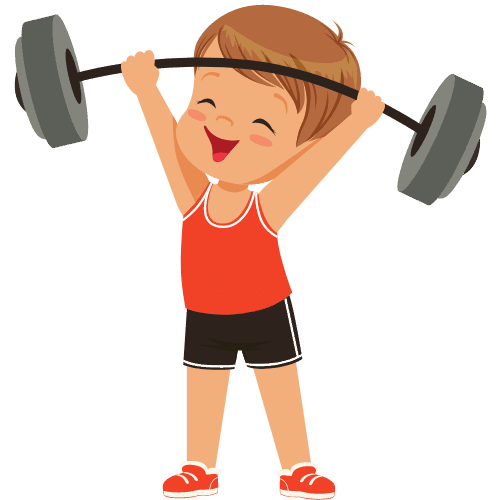
Wait, What If I’m A Beginner?
Even as a beginner, you’re okay to follow the guidelines in this article! The most important things are these:
- Decide on your goal, so you know the general number of sets/reps you need.
- Always — and I mean always— start with your bodyweight first.
- Once you’ve mastered bodyweight, then add dumbbells.
- Once you’re comfortable with dumbbells (and your prescribed set/rep ranges), either add weight or switch to barbells.
Remember, you can always lift heavier, but you can’t train with an injury. So as a beginner, it’s absolutely vital to follow these guidelines (and/or work with a certified personal trainer to make sure you’re being safe).
And in case you need it again, you can check our how much you should lift and our definitive guide to strength training.
TL;DR: Beginners are a-okay. Just start with your bodyweight.

Optimal Sets & Reps Ranges Based On Your Goal
We touched on this up top, but in case you want it in an easy-to-digest format, here ya go:
Muscle Mass (Hypertrophy)
Again, hypertrophy is the process of building muscle mass or making your muscles physically bigger. Again, this is for those who want to “look like they lift.”
To achieve hypertrophy, you can use drop sets, follow the recommendation below, or a combination of both:
- 3–5 sets of 6–12 reps with 1–2 minutes of rest between exercises
Again, it’ll take a little trial and error to figure out exactly how much weight you should be lifting. Always start lighter than you think you can and progress from there.
Muscular Endurance
Similar to hypertrophy, you can use time under tension training to increase your muscular endurance. This type of training is fairly flexible in terms of sets/reps (as the focus is more on the eccentric phase of the movement), but if you’re the type who just wants the answers now for f*ck’s sake, you can follow these recommendations:
- 3–4 sets of 15–20 reps with 1-minute rest between exercises
This type of lifting is excellent for athletes or those who are training for marathons. Anytime your muscles need to be under repeated strain for long periods, this is for you.
Muscle Strength
As opposed to hypertrophy which increases the size of the skeletal muscle fibers, strength training involves recruiting as many of those fibers as possible (without necessarily increasing their size).
Training for strength involves neuromuscular adaptation. Those are big words for your nervous system communicating with your muscle fibers.
To train for strength, follow this guideline:
- 2–6 sets of 1–5 reps with 3–5 minutes of rest between exercises
Use this for both compound exercises (ones that use multiple muscle groups, like squats) and isolation exercises (single muscle groups, like bicep curls).
Weight Loss
If you want to lose weight and you think cardio alone is the answer, think again. You absolutely need to be lifting weights to lose weight.
Why?
Strength training is an excellent way to burn calories. Plus, remember how muscle takes more calories to maintain than fat does? That means you’re using more calories during your day, even when you’re resting.
To train for weight loss, follow the superset recommendations:
- 2–4 sets of 6–12 reps with minimal rest between exercises
Why such a wide rep range? It will depend on how many sets you choose. For example, if you’re doing 4 sets of 12 reps of a goblet squat, that’s a lot of work. You’ll need to lift lighter. Or, if you’re doing only 2 sets of 12 reps, you can lift a little heavier.
Overall Fitness
Just want to be generally healthy but don’t have any specific athletic or aesthetic goals in mind? You’re already ahead of one-third of the population.
To stay generally fit, follow this guideline:
- 1–3 sets of 8–12 reps with around 1 minute of rest between exercises
Wait, only 1 set is an option? Turns out, yes. Some recent studies have shown that doing 1 set can be just as effective as multiple. Who knew?
Body Toning
Remember how hypertrophy is making your muscles look bigger? Body toning is similar, except your focus is actually on reducing the appearance of body fat by tightening up your muscles and giving them shape.
It’s sort of like when you vacuum the air out of one of those storage bags, and it shrinks down over your fluffy duvet cover for storage. Except the duvet is your muscle and the air is your body fat.
For effective toning, follow this guideline:
- 1–3 sets of 12–15 reps with about 1-minute rest between exercises
It’s important to note that lifting light to medium weights for higher rep ranges alone won’t tone you up. Your diet is 90% of the results you get, so make sure you dial in your nutrition.
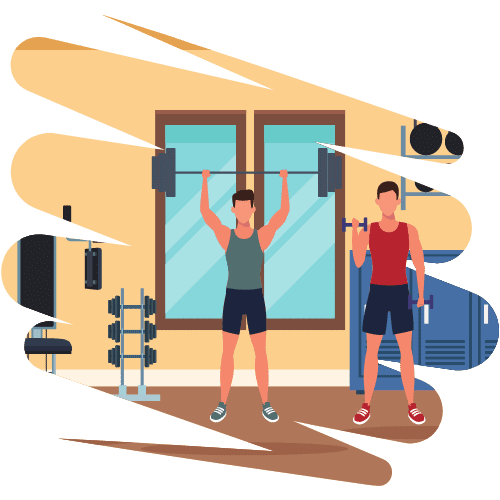
5 Tips To Maximize Your Sets
Alright, you’ve got a general idea of how many sets and reps to do depending on your goal. Now, let’s talk tips to maximize those sets, so you waste zero time in the gym.
Training to Failure
I touched on this a bit above, but training to “failure” is one way to get the most out of your workout. “Failure” means you reach a point where your final rep is a big struggle to complete with good form.
Note: I didn’t say you can’t complete it with good form. I said it’s a struggle. For example, you might need a spotter or to use your other hand to help finish a single-arm bicep curl. Form > reps, period. Get that tattooed on your forehead.
Training to failure is beneficial for increasing both hypertrophy and strength.
One thing to note: don’t train to failure every single time. When you reach failure, you’re putting your muscles under a lot of strain. They need time to build back up stronger, even more time than other methods of training. So stick to training to failure only once or twice per week.
TL;DR: Training to failure can increase hypertrophy and strength, but be sure to rest.
Rest
Speaking of rest, you absolutely need to incorporate enough of it into both your individual workouts and your week.
Yes, that means there will be days when you’re not working out. Gasp!
After a workout, your muscles get to work rebuilding themselves. However, the majority of that work takes place in the hours and days after your workout, not minutes. That means if you lift heavy on Monday, your muscles are still repairing themselves on Tuesday.
Don’t work the same muscle groups on back-to-back days. If you do, best-case scenario, you don’t get the best results. Worst case scenario, you risk injury.
The rest you take between your sets matters, too. Lighter weights and higher reps mean you can rest for shorter periods. Heavy weights and lower reps means you need to rest for longer. Play around with your rest times between sets so you feel energized and your form stays solid during your workout.
TL;DR: Prioritize your rest days.
Times Per Week to Target a Muscle
There are seven days in a week. Not working the same muscle back-to-back and lifting 2–3 days per week means you can work a specific muscle up to 3 times per week. It will depend largely on your training schedule. For example, if you lift Monday/Wednesday/Friday, you’ve got Tuesday/Thursday to rest in-between.
TL;DR: C’mon, you don’t need one of these for this bitty section.
Nutrition
The results you get in the gym are largely dependent on your nutrition. Think about it: if you’re training hard and undereating, your body doesn’t have the fuel necessary to give you maximum effort. Or, if you’re training hard but eating like garbage, you have the same issue.
Prioritize protein in your meals, but don’t overdo it. While science has proven there is no “protein ceiling” beyond which your body flushes it all out as urine or your kidneys explode, there aren’t really any benefits to consuming more than you need. (Wondering how much that is? This is how much protein you should eat a day.)
Also, prioritize plenty of fruits, vegetables, and high-quality carbs and fat. Ditch the fast food and pre-packaged shit. Fresh food is the way to go.
TL;DR: Your gym results depend on your nutrition, so dial it in.
Sleep
Sleep is similar to rest but not quite the same. Your body does a lot of repair work when you’re sleeping. (A lot.) If your sleep quality is poor, similar to your nutrition, you aren’t adequately fueled for your workouts.
You should know this by now, but in case you’ve recently emerged from some decade-long hibernation, here’s how to fix your sleep:
- Get a sleep routine before bed. This means absolutely no screen time (yes, put your freaking phone away) and approximately an hour of a relaxing activity instead. Read a book. Meditate. Take a bath. Paint. I don’t care what you do, just make sure it doesn’t have a screen involved.
- Ditch the alcohol. A nightcap is tempting, but alcohol doesn’t help you sleep. Instead, it helps you pass out. There’s a difference.
- Stop caffeine at about 3pm at the latest.
- Get outside for at least 30 minutes per day. Even indirect sun exposure helps reset your brain into going, “Oh! It’s daytime, I should be awake!” so when the sun goes away, your brain goes, “Oh! It’s nighttime, I should be asleep!”
TL;DR: Sleep is vital for recovery, so prioritize getting quality shut-eye.
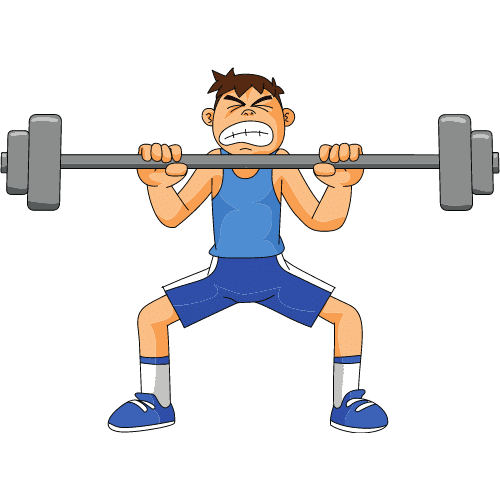
Test And Adjust To Your Ability And Body
Your sets, reps, and load will vary based on your fitness levels, health conditions, age, and recovery.
- Fitness levels: if you were already super active, you can likely lift more heavily and for longer periods.
- Health conditions: chronic health conditions will absolutely affect your training, so talk to your doctor before starting.
- Age: younger bodies tend to move more easily than older bodies. However, weight lifting is still very important for seniors.
- Recovery: yes, I’m saying it again. If you don’t recover adequately, it will affect your results.
TL;DR: Do some trial-and-error testing and remember the factors affecting your lifts.

More Sets + More Reps = More Gains Now???
Calm down, Rambo. No, more sets + more reps will not equal more gains now. What they will equal is injury. So especially if you’re a beginner, for the love of all that’s holy, take it slow and steady. There is no “quick fix” in fitness.
TL;DR: You don’t get one of those for this section either. Go read what I wrote.
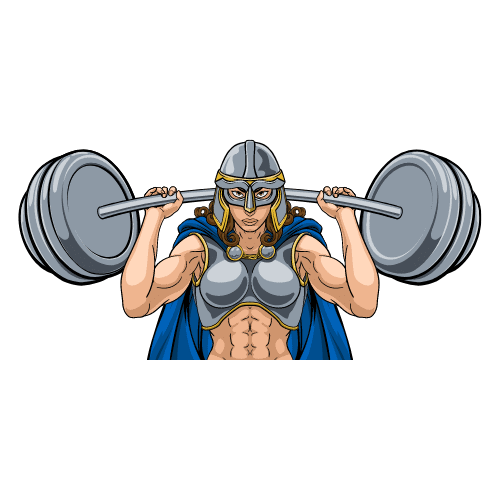
Will I Need To Add More Sets And Reps As I Progress?
Not necessarily. Adding sets and reps is one way to make progress and keep your muscles in progressive overload. Progressive overload is the concept of continually, well, making progress toward stronger/bigger/leaner muscles.
In addition to (or instead of) adding sets and reps, you can also lift heavier. Experiment with these variables to see what feels right for you.
TL;DR: Add sets/reps or weight as you progress.

Wrapping It Up
The number of sets and reps you do depends on your goal, experience, age, and any chronic health conditions you may have. Start with your bodyweight, then add light weights, then use an estimated range and adjust as you learn.

